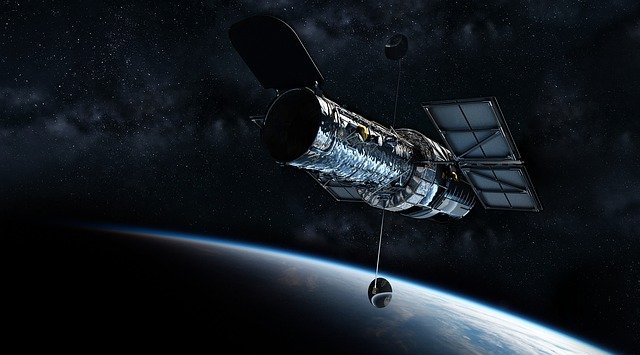SPACE EXPLORATION
JULY 23, 2021
hubble space telescope history

Hubble space telescope history started when it was launched aboard the space shuttle Discovery (STS-31) on April 24, 1990 by US space agency, NASA. It was deployed into orbit the next day, April 25, 1990.
Twice daily, the Hubble Space Telescope transmits data to a data relay satellite system, which then downlinks the data to high-gain microwave antennas located at the White Sands Test Facility in White Sands, New Mexico.
The bulk of data from Hubble telescope are sent to the Space Telescope Operations Control Center at Goddard Space Flight Center and finally to the Space Telescope Science Institute for archiving.
According to the Hubble site website, the telescope was named after astronomer Edwin Powell Hubble (1889–1953), who made some of the most important discoveries in modern astronomy.
In the 1920s, Hubble showed that some of the numerous distant, faint clouds of light in the universe were actually entire galaxies — much like our own Milky Way.
Then in 1929 Hubble determined that the farther a galaxy is from Earth, the faster it appears to move away. This is considered as his greatest discovery.

In 1946, astrophysicist Lyman Spitzer, Jr. from Yale University, published a paper entitled “Astronomical advantages of an extraterrestrial observatory”.
In the paper, he described about the advantages of observing astronomy from outer space and proposed the idea of a large space telescope.
NASA and the European Space Agency took up the idea and designed a 3 meter space telescope in the 1970’s. The project officially began when the United States Congress approved funding for the Large Space Telescope project earlier in 1977.
Later in 1983, the team of Large Space Telescope project decided to name the telescope after Edwin Powell Hubble who had discovered the expansion of the Universe in the 1920s.
At the time of its launch in 1990, the Hubble Space Telescope cost $4.7 billion (equivalent to $9,310,000,000 in 2020). The telescope completed 30 years of operational mission in April 2020 and could last until 2030–2040.
Hubble space telescope history is a very important to mankind as it opens our knowledge to space and universe.
One successor to replace the Hubble telescope is the James Webb Space Telescope (JWST) which is tentatively scheduled to be launched in late 2021.
related post